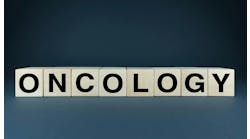EMR technology and adoption is certainly not a one-dimensional challenge. Now that large healthcare organizations are entering the "second generation" or phase two of EMR adoption, they are looking to maximize clinical improvement and workflow efficiency. Industry insiders say it's becoming increasingly clear that EMRs (along with other related clinical information systems) will be essential to healthcare institutions. To read our three-part cover story on EMR adoption, including opinions from industry experts discussing EMR selection, utilization, and management, go to "Performance Improvement: EMR Nirvana," page 20.
A revolution is under way at Vassar Brothers Medical Center. Clinicians and staff are experiencing a new kind of freedom as the hospital goes wireless. Nicholas Christiano, vice president and CIO of Health Quest — the parent company of Vassar Brothers Medical Center in New York — is a leader in the area of wireless adoption. Christiano discusses the importance of mobility in enabling today's clinicians and gives advice on just how CIOs can go about unplugging their organizations. We outline this in, "Hospital, Unplugged," page 46.
Industry expert, Jay Cannon, president of the Medical Transcription Industry Association (MTIA), Chicago, contends that there is no real structure to the narrative that's being inserted into EMRs. In response to the lack of common standards, an AHIMA-backed effort was launched earlier this year to establish interoperability specifications for common types of clinical documents. The project, called "CDA for Common Document Types," will yield implementation guides for the most common types of dictated clinical documents, using the HL7 Clinical Document Architecture (also used by the ASTM/HL7 Continuity of Care Document). Find out more in, "What's in a Document?" page 12.
With no industry regulated standards set for e-prescribing networks in place until recently, e-prescribing companies have been defining themselves. The lack of standards has made it difficult to differentiate the level of service provided by e-prescribing entities. However, the Electronic Healthcare Network Accreditation Commission (ENHAC) — an accrediting agency providing independent organizational peer evaluation — has certified its first e-prescribing network, RxHub. To read more about the accreditation process, go to "Stamp of Approval," page 16.

